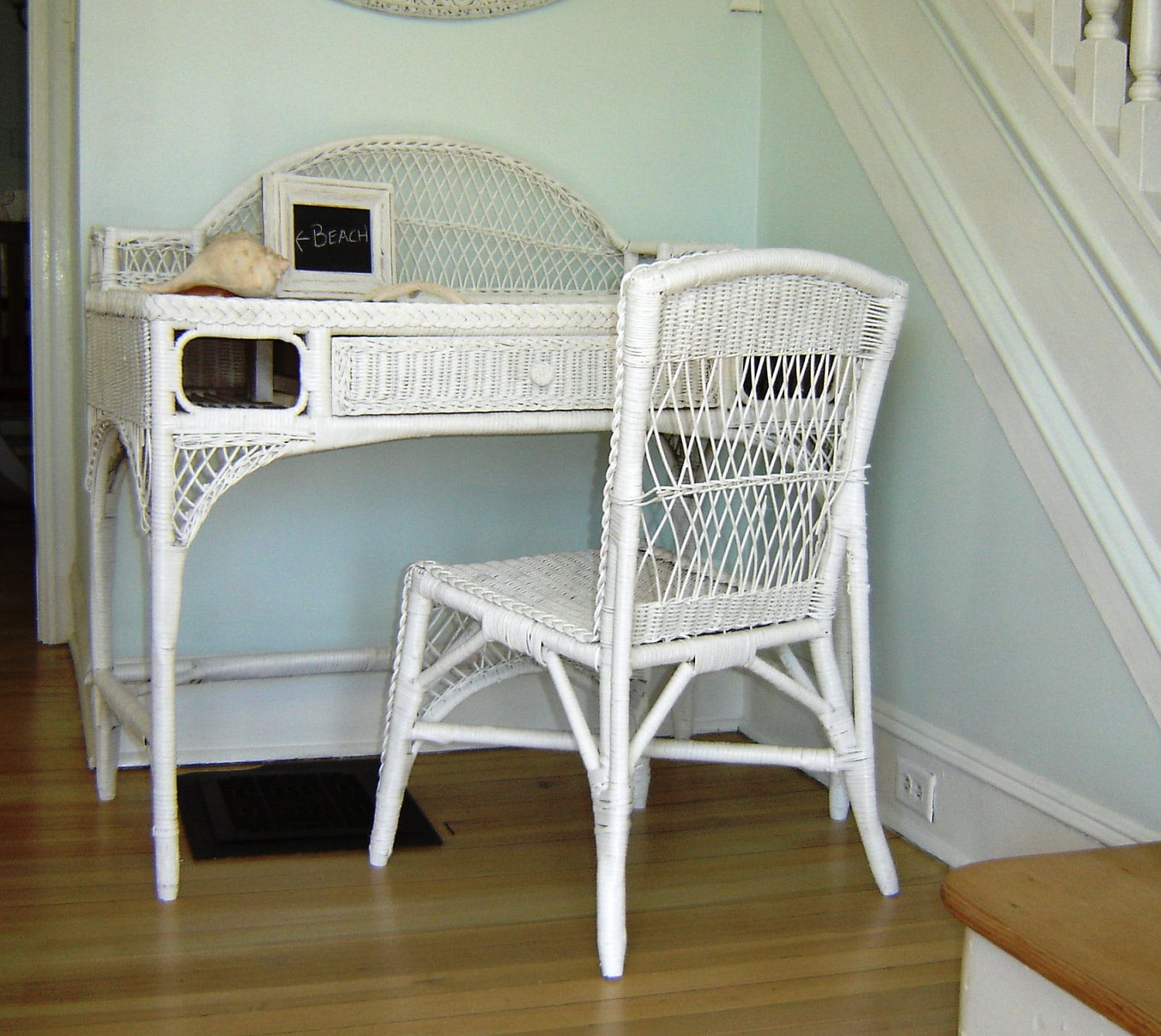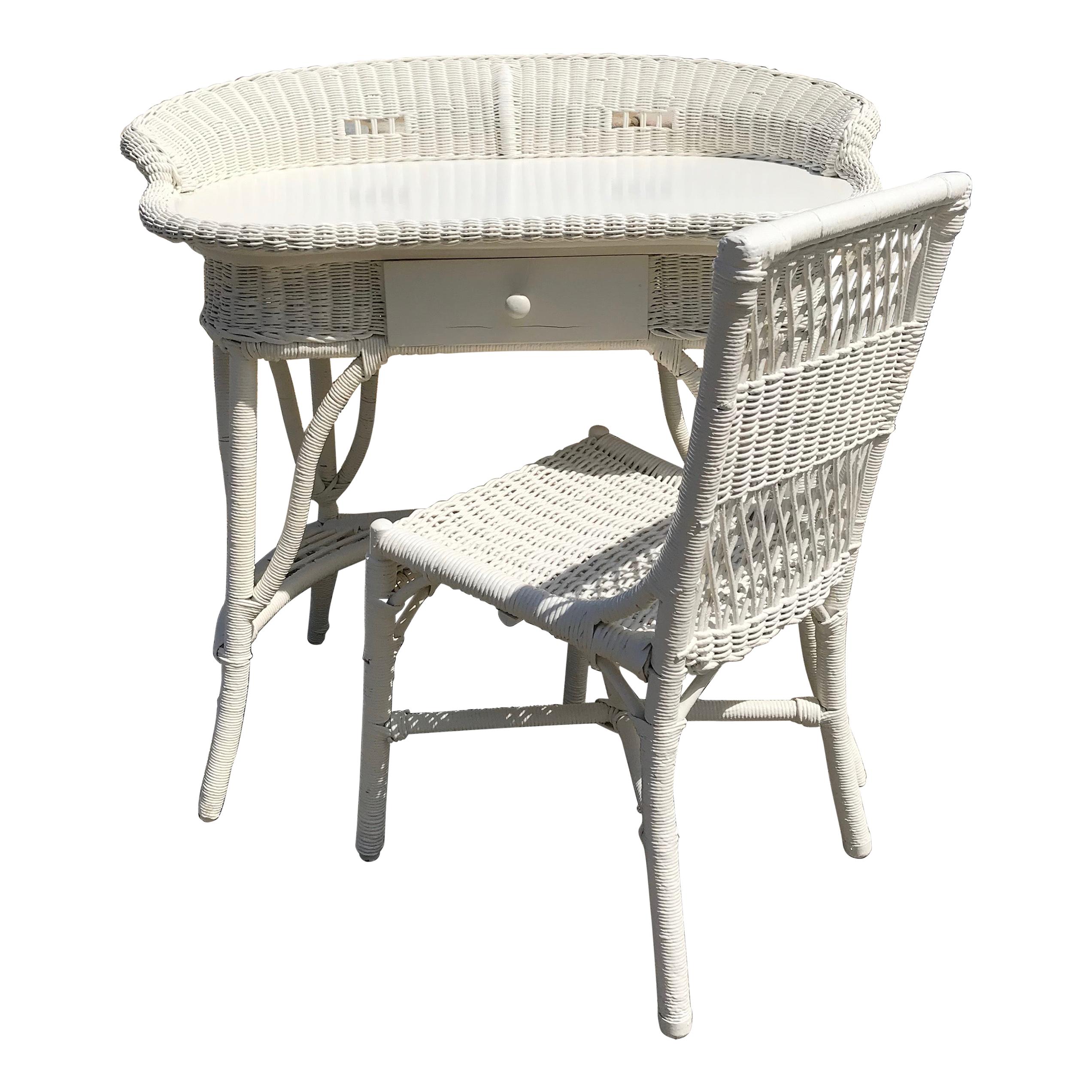History and Origin of Antique Wicker Furniture

Wicker furniture, known for its intricate weaves and natural beauty, boasts a rich history that spans centuries and continents. From its humble beginnings as a practical solution for crafting durable and lightweight furnishings to its evolution into a coveted design element, wicker furniture has played a significant role in shaping interior design trends throughout history.
Materials and Techniques Used in Antique Wicker Furniture
The crafting of antique wicker furniture involved meticulous selection of materials and the mastery of intricate weaving techniques.
- Materials: Wicker furniture was primarily crafted using natural materials like rattan, willow, bamboo, and cane. These materials were chosen for their strength, flexibility, and natural beauty. Rattan, a type of climbing palm, was particularly favored for its durability and ability to be bent into intricate shapes. Willow, known for its pliable branches, was commonly used for creating lighter and more delicate pieces. Bamboo, with its inherent strength and versatility, was employed for constructing larger and more robust furniture. Cane, a type of grass, was frequently used for weaving intricate patterns and adding a touch of elegance to furniture pieces.
- Techniques: The weaving techniques employed in antique wicker furniture varied based on the desired design and the materials used. Simple weaves, such as the “plain weave,” were used for basic structures, while more complex techniques, like the “herringbone weave” and the “basket weave,” were utilized to create intricate patterns and decorative elements. These techniques required a high level of skill and craftsmanship, resulting in furniture pieces that were both functional and aesthetically pleasing.
Notable Makers and Designers of Antique Wicker Furniture, Antique wicker desk and chair
Throughout history, numerous skilled artisans and designers have contributed to the legacy of antique wicker furniture.
- The Vienna School of Wickerwork: The Vienna School of Wickerwork, established in the late 19th century, became renowned for its intricate and elegant designs. Notable figures like Carl A. Bechstein and Carl W. Bechstein, father and son, played a pivotal role in shaping the school’s distinctive style. Their furniture was characterized by its intricate weaves, delicate curves, and the use of natural materials, often incorporating floral motifs and geometric patterns. The Vienna School’s influence extended beyond Vienna, inspiring wicker furniture designers across Europe and beyond.
- The Colonial Era in America: During the Colonial Era in America, wicker furniture found its place in homes across the colonies. Early American wicker furniture was often characterized by its simple, functional designs, using materials readily available in the colonies. This era saw the emergence of notable makers like John Henry Belter, known for his intricate and elaborate furniture designs, including his iconic “Belter chair.”
Styles and Designs of Antique Wicker Desks and Chairs

Antique wicker furniture, known for its intricate weaving and natural beauty, encompasses a wide range of styles and designs that reflect the aesthetic sensibilities of different historical periods. These styles, each with its distinct characteristics and design elements, provide a fascinating glimpse into the evolution of furniture design and craftsmanship.
Victorian Wicker Furniture
Victorian wicker furniture, popular during the latter half of the 19th century, is characterized by its elaborate ornamentation, intricate weaving patterns, and use of natural materials.
- Description: Victorian wicker furniture is often associated with a romantic and opulent aesthetic. It features intricate weaving patterns, such as the “cane” weave, which creates a delicate and airy appearance. Decorative elements, including floral motifs, scrollwork, and turned legs, are commonly incorporated into the design.
-
Characteristics:
- Intricate weaving patterns, such as the “cane” weave, creating a delicate and airy appearance.
- Elaborate ornamentation, including floral motifs, scrollwork, and turned legs.
- Use of natural materials, such as rattan, wicker, and bamboo.
-
Notable Examples:
- A Victorian wicker desk with a curved top, intricate floral motifs, and turned legs.
- A set of Victorian wicker chairs with cane seats and backs, adorned with floral patterns and scrollwork.
Art Deco Wicker Furniture
Art Deco wicker furniture, popular during the 1920s and 1930s, embodies the sleek and geometric aesthetic of the Art Deco movement.
- Description: Art Deco wicker furniture often features clean lines, geometric shapes, and a focus on functionality. It often incorporates bold colors and patterns, such as zigzags, chevrons, and sunbursts.
-
Characteristics:
- Clean lines and geometric shapes.
- Focus on functionality and simplicity.
- Use of bold colors and patterns, such as zigzags, chevrons, and sunbursts.
-
Notable Examples:
- An Art Deco wicker desk with a rectangular top, geometric legs, and a bold chevron pattern.
- A set of Art Deco wicker chairs with geometric frames, cane seats, and sunburst motifs.
Mission Revival Wicker Furniture
Mission Revival wicker furniture, popular during the early 20th century, draws inspiration from the Arts and Crafts movement and the Spanish Colonial Revival style.
- Description: Mission Revival wicker furniture is characterized by its simple, handcrafted design, often featuring natural materials and a focus on functionality. It often incorporates elements of Spanish Colonial architecture, such as arches, squares, and geometric patterns.
-
Characteristics:
- Simple, handcrafted design with a focus on functionality.
- Use of natural materials, such as rattan, wicker, and bamboo.
- Incorporation of elements of Spanish Colonial architecture, such as arches, squares, and geometric patterns.
-
Notable Examples:
- A Mission Revival wicker desk with a rectangular top, simple legs, and a geometric pattern.
- A set of Mission Revival wicker chairs with square frames, cane seats, and a simple, handcrafted design.
| Style | Description | Characteristics | Notable Examples |
|---|---|---|---|
| Victorian | Elaborate ornamentation, intricate weaving patterns, and use of natural materials. | Intricate weaving patterns, elaborate ornamentation, use of natural materials. | Victorian wicker desk with a curved top, intricate floral motifs, and turned legs; set of Victorian wicker chairs with cane seats and backs, adorned with floral patterns and scrollwork. |
| Art Deco | Clean lines, geometric shapes, and a focus on functionality. | Clean lines and geometric shapes, focus on functionality, use of bold colors and patterns. | Art Deco wicker desk with a rectangular top, geometric legs, and a bold chevron pattern; set of Art Deco wicker chairs with geometric frames, cane seats, and sunburst motifs. |
| Mission Revival | Simple, handcrafted design, often featuring natural materials and a focus on functionality. | Simple, handcrafted design, use of natural materials, incorporation of elements of Spanish Colonial architecture. | Mission Revival wicker desk with a rectangular top, simple legs, and a geometric pattern; set of Mission Revival wicker chairs with square frames, cane seats, and a simple, handcrafted design. |
Value and Appreciation of Antique Wicker Furniture: Antique Wicker Desk And Chair

The value of antique wicker furniture is determined by a complex interplay of factors, including its age, condition, rarity, and provenance. Understanding these elements is crucial for collectors, enthusiasts, and anyone interested in acquiring or appreciating antique wicker pieces.
Factors Influencing Value
The value of antique wicker furniture is influenced by a number of factors, each contributing to its overall worth.
- Age: As with any antique, age is a significant factor in determining value. Older pieces, especially those dating back to the 19th century or earlier, are generally more valuable than newer ones. This is because older pieces are often made with higher quality materials and craftsmanship, and they have survived the test of time.
- Condition: The condition of an antique wicker piece is paramount. Well-preserved pieces with minimal wear and tear command higher prices. Restoration can enhance the value of a piece, but it’s important to note that poorly executed restoration can actually diminish its worth.
- Rarity: Unique or rare designs, materials, or maker’s marks can significantly increase the value of antique wicker furniture. Limited production runs, pieces made by renowned designers or artisans, or those with unusual features are highly sought after by collectors.
- Provenance: The history of an antique wicker piece, including its previous owners or its association with significant events or people, can contribute to its value. Pieces with documented provenance, such as letters, photographs, or auction records, are often more valuable than those without.
Value Comparison of Styles and Designs
The value of antique wicker desks and chairs varies depending on their style and design. Some popular styles include:
- Victorian Wicker: Victorian wicker pieces, often characterized by elaborate designs, intricate detailing, and the use of natural materials like cane and rattan, are highly sought after by collectors. These pieces often feature intricate floral motifs, geometric patterns, and bold colors.
- Art Nouveau Wicker: Art Nouveau wicker pieces, typically produced between 1890 and 1910, showcase flowing lines, organic forms, and a focus on natural motifs. These pieces often feature stylized flowers, leaves, and insects, reflecting the movement’s emphasis on nature and beauty.
- Art Deco Wicker: Art Deco wicker pieces, produced in the 1920s and 1930s, are characterized by geometric shapes, bold colors, and luxurious materials. These pieces often feature geometric patterns, stylized animals, and luxurious finishes.
- Mid-Century Modern Wicker: Mid-century modern wicker pieces, produced from the 1940s to the 1960s, are known for their clean lines, minimalist designs, and functional aesthetics. These pieces often feature simple shapes, natural materials, and a focus on comfort and practicality.
Notable Sales and Auctions
The auction market provides valuable insights into the value of antique wicker furniture. Here are some notable examples:
- A rare Victorian wicker settee, attributed to the renowned wicker furniture maker, William Lloyd, sold for $12,000 at a Christie’s auction in 2019. The settee, featuring intricate floral motifs and a unique cane weave, was considered a prime example of Victorian wicker craftsmanship.
- An Art Nouveau wicker desk, designed by the renowned French designer, Émile Gallé, fetched $25,000 at a Sotheby’s auction in 2020. The desk, featuring a distinctive floral motif and intricate inlay work, was a testament to Gallé’s innovative approach to design.
- A mid-century modern wicker armchair, designed by the Danish architect, Arne Jacobsen, sold for $5,000 at a Phillips auction in 2021. The armchair, known for its minimalist design and comfortable form, was a prime example of Jacobsen’s influential contribution to mid-century modern furniture.
Antique wicker desk and chair sets offer a charming vintage appeal, but they might not always provide the comfort needed for long work sessions. If you’re seeking a more modern and ergonomic solution, consider a soft pink desk chair for a touch of elegance and superior support.
While wicker sets bring a rustic charm, a soft pink desk chair can add a contemporary twist to your workspace, blending style with functionality.
Antique wicker desk and chair sets evoke a sense of rustic charm and timeless elegance. While wicker offers a breezy, airy aesthetic, for a more modern touch, consider pairing your antique desk with a mid century modern swivel desk chair.
This combination merges the warmth of vintage with the sleek lines of mid-century design, creating a unique and stylish workspace.